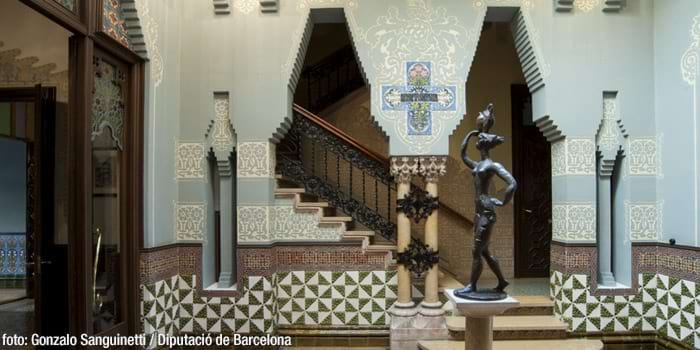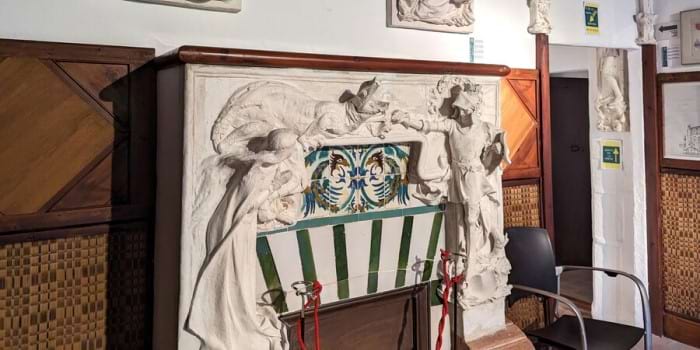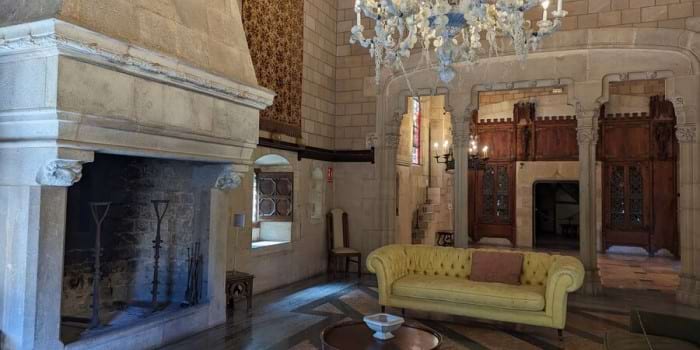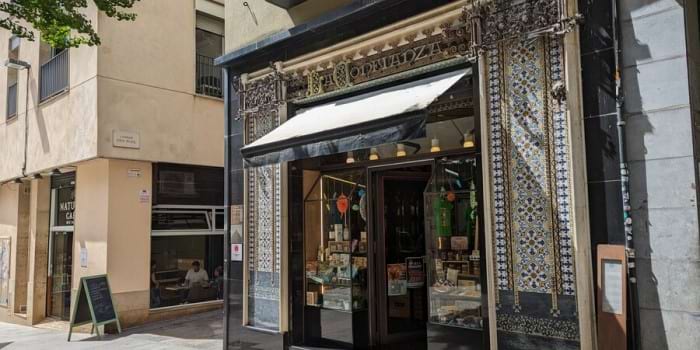Art Nouveau in Maresme: the legacy of three geniuses
Did you know that Gaudí's starting point is located in Mataró? That Lluís Domènech i Montaner, the genius behind the Palau de la Música Catalana and the Sant Pau Hospital in Barcelona, refurbished a medieval castle in Canet de Mar? Patricia Rojas, La Cosmopolilla, a journalist and travel blogger, suggests a route through the Art Nouveau legacy of Maresme, a region of Costa Barcelona that is popular for its beaches and boasts a great heritage to discover. A real treat!
I'm Patricia Rojas, a journalist and travel blogger at La Cosmopolilla, where I’ve been sharing my adventures around the world since 2013. An Andalusian living in Barcelona, I love travelling and getting lost in new places. Whether it’s an hour away from home or on the other side of the planet!
Nau Gaudí, Mataró
1878. A young Antoni Gaudí, who was about to graduate, was commissioned by the Cooperativa Obrera Mataronesa (Mataró Workers' Cooperative). The most universal of Catalan architects was to design an industrial colony with houses, a school and even a casino around the textile factory. Of the ambitious initial project, only the cotton bleaching shed and a nearby toilet were built: the rest was abandoned due to lack of funds. For curious travellers who want to imagine what could have been but was not: the original plans are stored in the Mataró Municipal Archives.
But what is the relevance of Nau Gaudí? Beyond its historical and artistic value, this first building by the Catalan architect in Mataró marked the start of a meteoric career. In the industrial building, Gaudí used parabolic arches for the first time to create a completely open-plan structure, with no columns to disturb the workers during their work. This curvilinear skeleton was later replicated in the Sagrada Família and the Gaudí Crypt in the Güell Colony, both of which have been declared UNESCO World Heritage Sites.
But there is more. The bold plans for the Nau building were presented at the Paris Universal Exhibition in 1889, catching the attention of a wealthy Catalan businessman: Eusebi Güell. This was the beginning of a great story of friendship and patronage: Antoni Gaudí became the architect in charge of making Mr Güell's dreams or follies come true: the pavilions of Finca Güell in 1884, the Palau Güell, the Güell cellars in Garraf, the crypt of the Güell Colony in Santa Coloma de Cervelló and Park Güell in Barcelona. This duo undoubtedly transformed the city of Barcelona and its surroundings forever.
Puig i Calafalch route in Mataró.
We have changed architect but not city. Now it is time to talk about another icon of Art Nouveau born in Mataró in 1867: Josep Puig i Cadafalch. I'm sure you have sure heard of the Amatller House Museum, commissioned to the architect by the Xocolates Amatller businessman, which competes in elegance with its neighbouring Casa Batlló on Passeig de Gràcia. Puig i Cadafalch also left his mark on his hometown, which you will notice throughout the historical centre. At the age of just 24, he took over the post of municipal architect. Thus, it is possible to follow his mark in the plenary hall of the Mataró City Hall, the Rengle market, the La Confiança shop, the Casa Parera, the Beneficència building or the Coll i Regàs House, Mataró’s Art Nouveau treasure.
If you visit this beautiful bourgeois home, I recommend that you pay close attention to the details: the Filosa, a figure of a woman with a spindle in her hands, welcomes visitors among other amusing sculptures on its façade. A frog wearing trousers or a monkey in a jacket wink at the chore of the home owner, a textile entrepreneur.
Extra: if you want to continue discovering Puig i Cadafalch's work in the Maresme region, you can travel to the neighbouring town of Argentona, where the architect's summer house, the Sacrament Chapel, the Torre d'Aigües del Cros or Ca Calopa are located.
Domènech i Montaner House Museum, Canet de Mar.
There is no summer vacation like that spent in a village, with its cicadas, refreshing baths, naps and watermelon slices. Even more so if it is spent on the shores of the Mediterranean in a town as charming as Canet de Mar. This is what the Domènech i Montaner family must have thought, who did not hesitate to leave Barcelona every summer and settle with all their offspring in Ca Rocosa: Lluís and Maria Roura, born in Canet, had eight children. In between, he worked in his father's printing press, was involved in politics and, of course, architecture. This building, which has now been turned into a museum, still houses the studio where he designed some of his unique works, such as the Palau de la Música Catalana. The balcony of the house overlooks the town's main street, where two of his other creations stand: the Ateneu and Casa Roura, for his wife's family.
Santa Florentina Castle.
Medieval on the outside, Art Nouveau on the inside. If you come to Canet de Mar, a visit not to be missed is this 11th-century fortress, where the lords lived away from the town until the very 20th century. Surrounded by forest, this superb palace became famous a few years ago thanks to the shooting of the most watched fantasy series in the history of television: it became the home of House Tarly in Game of Thrones.
Why is the Santa Florentina Castle a symbol of Art Nouveau in Maresme? Because it was Domènech i Montaner himself who undertook its restoration, at the request of his uncle, the Count of Canet de Mar, in 1910. Stained-glass windows, ceramics, wrought ironwork, counters and all kinds of details that are characteristic of his work were incorporated into a luxurious home worthy of a king: Alfonso XIII himself stayed there. His room in the castle, with a large canopied bed, is still preserved. It depicts the splendour of a beautiful era that still dazzles us, after more than a century, in this region of the Barcelona coast.
More information:
Turisme Maresme Nau Gaudí
Coll i Regàs House
Domènech i Montaner House Museum
Santa Florentina Castle
Canet Tourism
Visit Mataró









